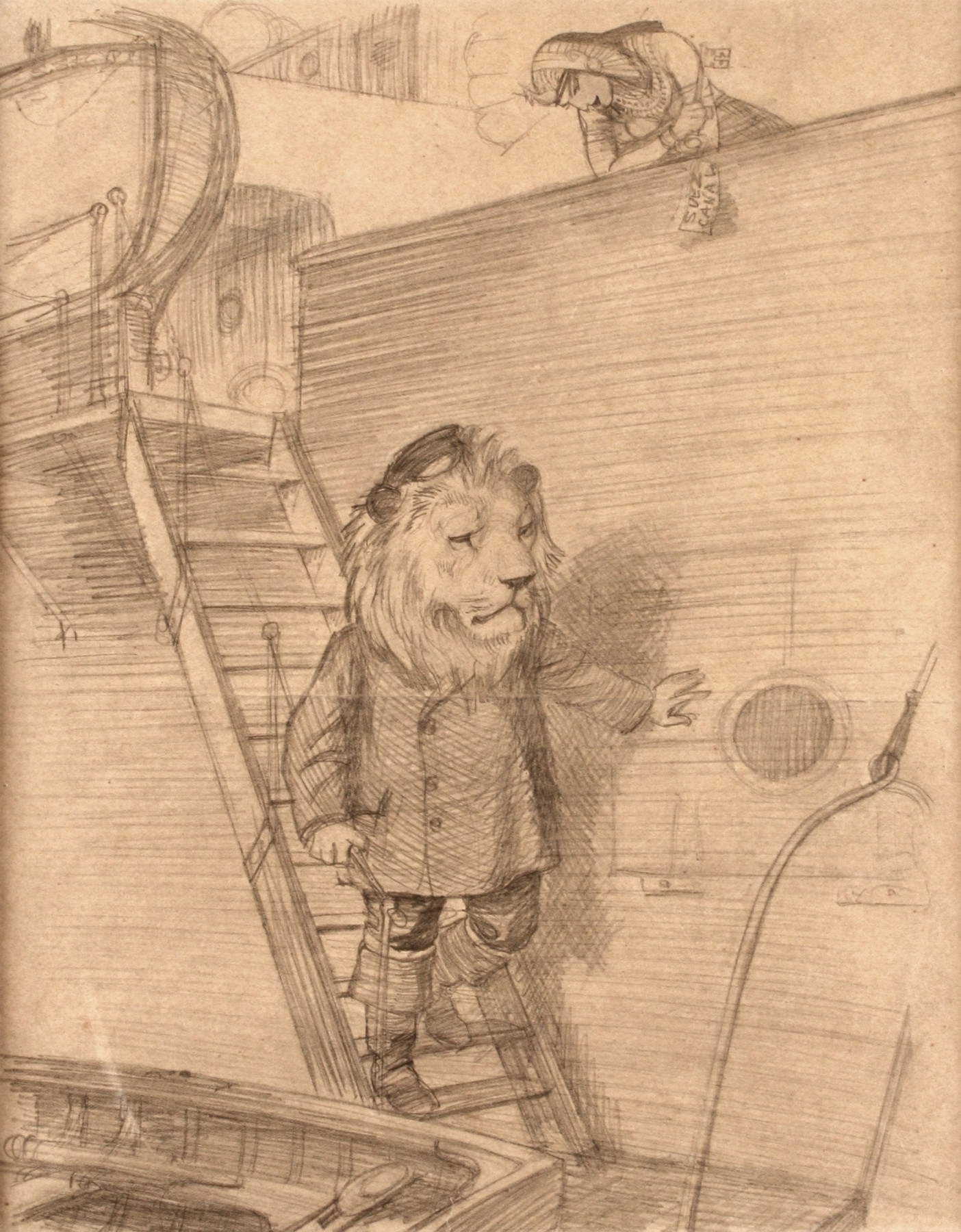
(click image to enlarge)
Dropping the Pilot – John Tenniel, Punch – March 1890.
Depicting Chancellor Otto Von Bismarck stepping off a ship, watched by the German Emperor Wilhelm II. since it was first published, Tenniel's image has often been re-worked by other cartoonists to represent a parallel situation, that is someone who once proved useful but is now to be jettisoned.
Cleopatra and the Lion
Shepard’s reworking of Dropping the Pilot
Using Tenniel’s famous composition for Dropping the Pilot, Shepard here dramatises the insistence of Egypt that, following the Second World War, Britain withdraw all her military forces and permit its absorption of the Sudan. as indicated by the key in Cleopatra’s hand, Suez would remain the moot point, and indeed lead to the crisis of 1956.
The phrase ‘dropping the pilot’ originally referred to the practice of hiring a pilot for a limited period in order to get an ocean-going ship out of a harbour; for, having achieved this, the pilot then left the ship.
The term ‘pilot’ was first applied to the nineteenth-century German chancellor, Otto von Bismarck, by the Austro-American cartoonist, Joseph Keppler. In March 1871, Keppler founded Puck, America’s first successful humorous magazine in St Louis, Missouri, in both English and German language editions. One of his early cartoons published in Puck showed Bismarck on a ship at the height of his powers; it was entitled the master pilot of the age.
Following the accession of Emperor Wilhelm II to the German throne, in 1888, Bismarck’s influence began to wane, and he was forced to resign in the following year. This event was reported widely in the British press, Punch responding with John Tenniel’s most famous cartoon, Dropping the Pilot, published on 29 March 1890. The subject – of Bismarck leaving the Emperor’s ship – was suggested to Tenniel by fellow Punch cartoonist, Gilbert à Beckett, who may have had Keppler’s earlier cartoon in mind.
Since it was first published, Tenniel’s image has often been reworked by other cartoonists in their attempts to represent a parallel situation, that is someone who once proved useful but is now to be jettisoned. The reworkings range from David Low showing Hitler dropping Hjmar Schacht as President of the Reichsbank (Evening Standard, 23 January 1939) to Drew Friedman showing Harold Ickes ushering Mark Penn from Hillary Clinton’s cockpit (New York Observer, 8 April 2008). the present cartoon falls within this tradition.